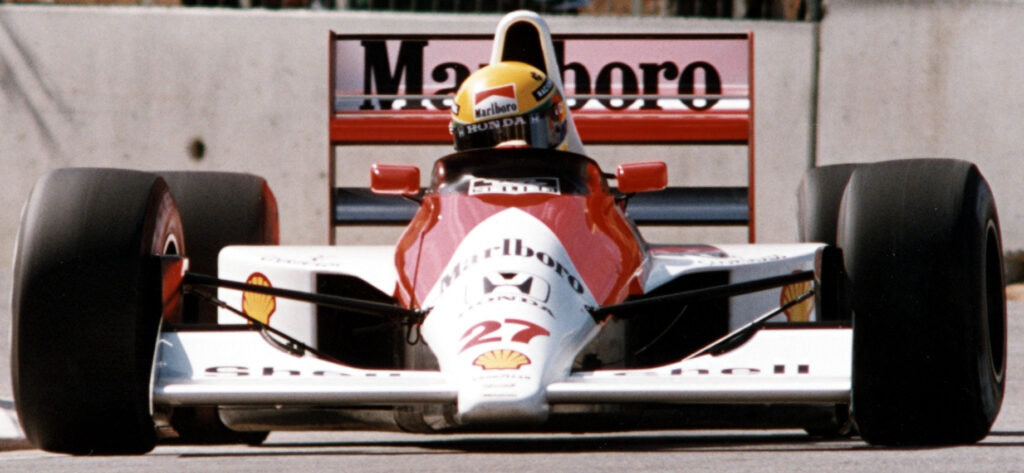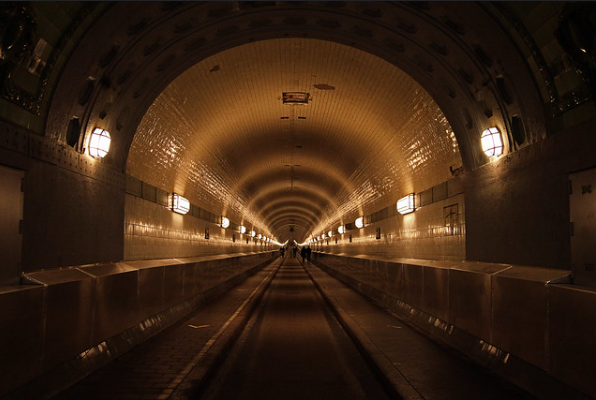Focus Of Attention
Many sports clients have reported being distracted by various aspects of their performance environment. For instance, a tennis player who came to see me was often disturbed by loud noises from the crowd or surroundings, especially during crucial points in the game. Such sudden noises would distract the player, leading to a loss of focus and potentially resulting in mistakes or unforced errors
Another case in point is that of a young darts player who struggled to perform in front of an audience. Although he was excellent in practice, his game would invariably fall apart when spectators were present.
The Tunnel –

“I felt as if I was driving in a tunnel – The whole circuit became a tunnel….I had reached such a high level of concentration that it was as if the can and I had become one. Together we were at the maximum. I was giving the car everything, and vice versa….”
Ayrton Senna – Formula One racing world champion (Independent – 11 Dec ’95)
In both of the above cases the idea was implanted after starting by using The Focused Awareness Technique then I got them to imagine that they are in a tunnel, a tunnel of concentration and mental fixation, I then added a variety of qualities to The Power Of Suggestion prearranged with the client

This tunnel can have whatever qualities will benefit the client in their particular circumstances. The tunnel can be see-through, opaque, soundproof or have any other qualities which are required for that particular client. This focus of attention will then avoid distraction very easily. However, as with all suggestions of this kind there have to be built in safeguards, whereby any urgent noises, emergency signals or instruction of any kind and indeed the voice or signals of race officials must be allowed through.
A variation of this idea is the imaginary shield, this I have used with golfers to enable them to respond to the conversation as they move around the course, but not have it penetrate far enough to affect their confidence, concentration or performance.
I have found the The Rollercoaster Technique below., also The William Tell Metaphor, can be very helpful on getting the message across more indirectly
More on the Focus of Attention and The Rollercoaster technique

As humans, we have the innate ability to concentrate, but our concentration can take on two different forms. Active concentration is when we are fully engaged, eyes wide open, sitting forward, and actively involved in the task at hand. This type of concentration is essential for peak performance.
On the other hand, passive concentration involves sitting back, relaxing, and allowing things to come to us. We are fully immersed in the experience, but there is no active effort to engage with it. For instance, when watching a movie or listening to music, we can be absorbed in it without trying to remember, yet we can recall details of what happened.
The primary difference between active and passive concentration is that active concentration requires effort and deliberate focus, whereas passive concentration occurs effortlessly.
Most people tend to stick to one form of concentration and end up being too hyper-focused to take in new information or too passive to utilize it.
Therefore, we must learn how to control our focus of attention and use the appropriate form of concentration based on the task at hand
The Rollercoaster Technique
Start by using The Focused Awareness Technique
Then tell them them the following:
Have you ever been on a rollercoaster ride? Just like a rollercoaster, your concentration can go up and down, depending on the task at hand. Sometimes you need to be fully engaged and alert, while at other times you need to relax and let things flow.
To help you take control of your concentration, we are going to introduce a lever in your mind that works like the one on a rollercoaster. This lever will allow you to easily adjust your concentration level from high to low and back again, depending on what you need at any given moment.
So, imagine that there is a lever in your mind that looks like this:
On the left-hand side, you have low concentration; on the right, you have high concentration.
1 Remember a time when you were in a state of low concentration — maybe you were daydreaming or relaxing in a quiet place. Visualize what you were doing, how you felt, and the environment around you. As you do, move the lever all the way to the left.
2 Go through this memory at least three more times while keeping the lever all the way to the left.
3 Now, remember a time when you were in a state of high concentration — maybe you were active in your sport at a crucial point. Visualize what you were doing, how you felt, and the environment around you. This time, move the lever all the way to the right.
4 Go through this memory at least three more times while keeping the lever all the way to the right.
5 Now, gently move the lever back over to the left and think of another time when you were in a state of low concentration.
6 Then, gently move the lever back over to the right and think of another time when you were in a state of high concentration.
Repeat this back-and-forth movement of the lever at least three more times, being sure to stop at the far left and far right long enough to remember at least one specific incident of low concentration on the left and one specific incident of high concentration when the lever is on the right.
With this lever, you now have the power to adjust your concentration level as needed, just like a rollercoaster ride. Use it wisely to maximize your performance and enhance your overall experience.
